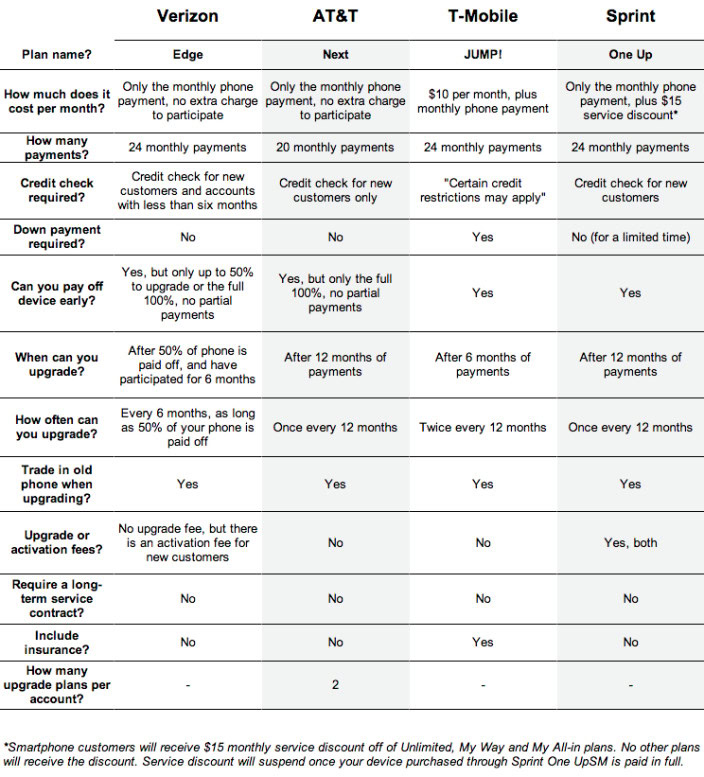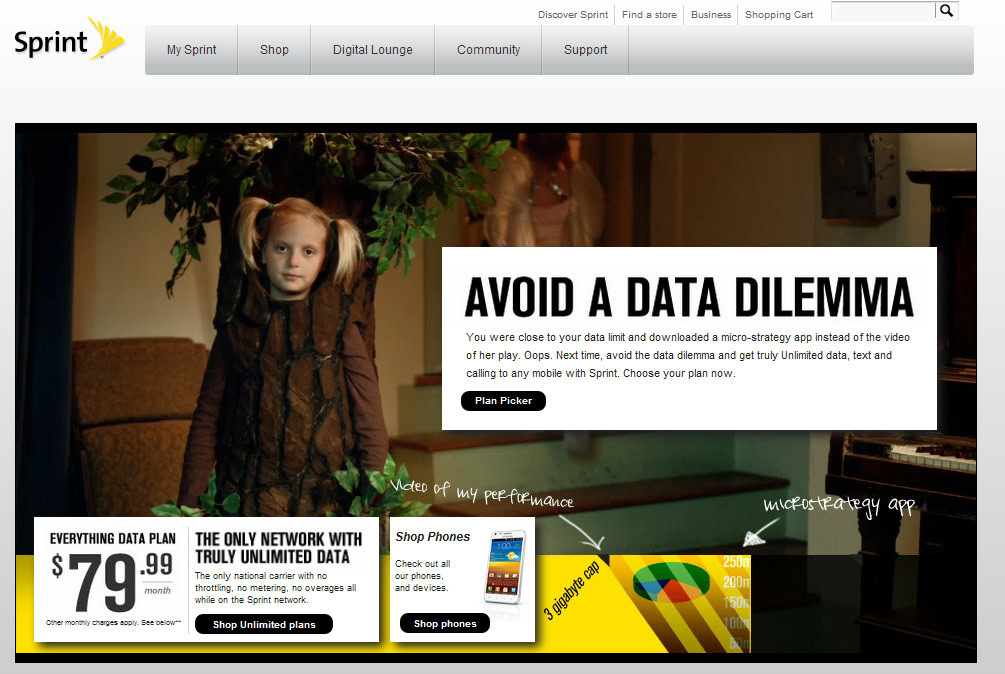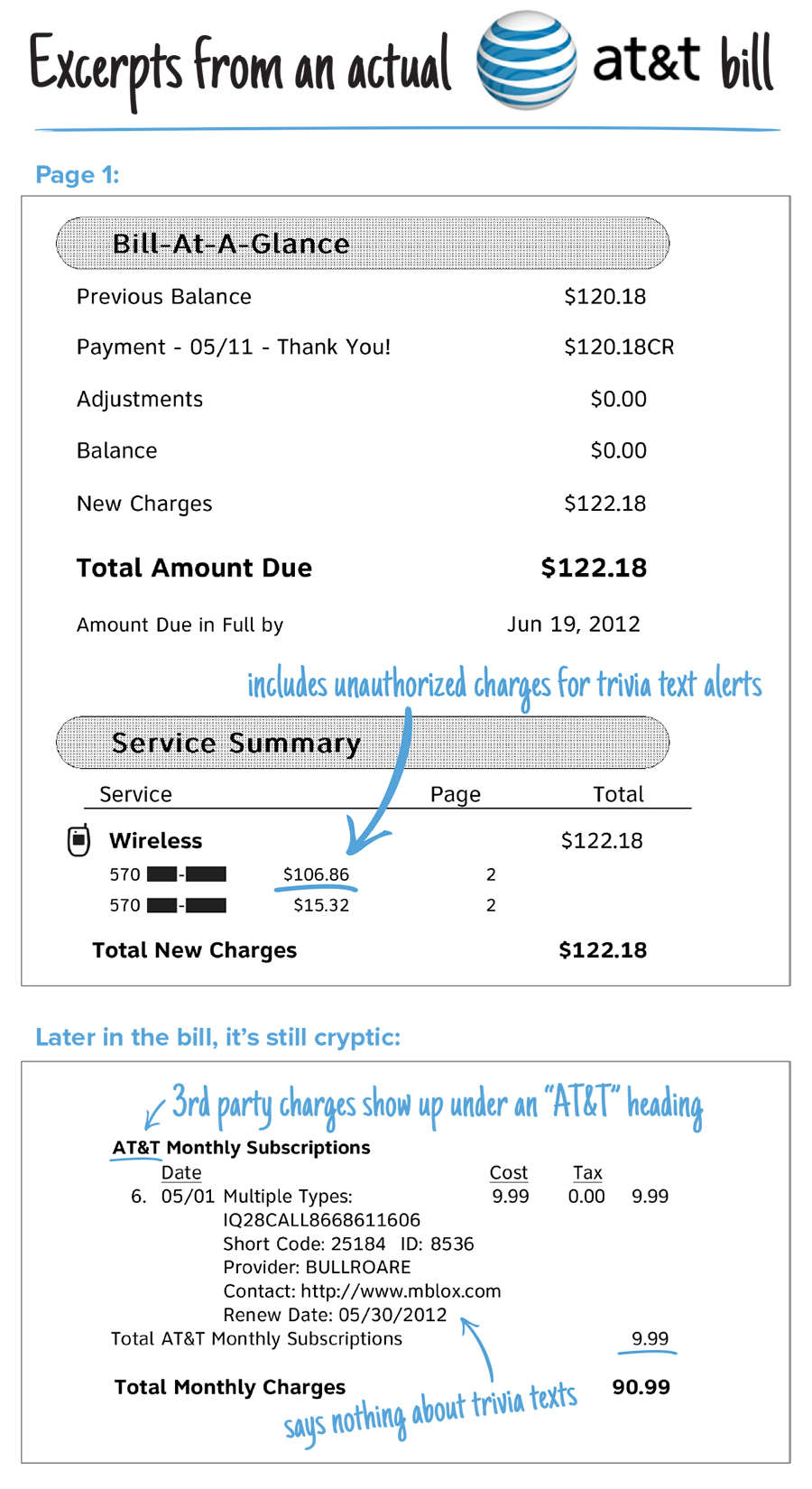Affiliate links on Android Authority may earn us a commission. Learn more.
Dealing with cellphone carriers is confusing on purpose

Several days ago, the New York Times ran an interesting piece that pointed out just how confusing wireless plans are presented to consumers. As the story pointed out, even executives at several wireless phone companies are admitting that such confusion exists due to a “a Tower of Babel of competing plans, with highly specific requirements and offerings and even, in many cases, unique language buried in the fine print.”
But at what point will people realize that such plans are intentionally as confusing as possible? AT&T’s new chief executive has since admitted to “propagating some confusion in the marketplace” while T-Mobile’s chief marketing officer admitted to being part of an “industry where the carriers have sown a massive amount of confusion.”
So let’s get into the confusion that always adds to the carriers financial pockets.
Upgrading
When Verizon and AT&T first introduced their new upgrade programs (in response to T-Mobile), they made sure to make it as difficult as possible to understand for the average consumer. Why? Because customers weren’t saving whatsoever with the upgrade plans. In fact, customers were paying twice for the same phone.
For years, carriers have admitted openly to jacking up the cost of service to counter handset subsidies. Yet, when the new upgrade plans were introduced which eliminated the subsides, the price of service didn’t drop at all. In fact, it took some national attention over several months for the carriers to make changes to the upgrade programs so that they weren’t a complete and utter “rip-off” (as Lifehacker flatly stated).

Or as the New York Times explained:
One wireless phone plan allows customers to upgrade to a new phone in less than two years. Another allows a pool of data to be shared across multiple devices. Yet another offers unlimited data, but only at slower Internet speeds. All these perks are there for the taking, yet the average wireless phone bill continues with its monthly sting. Confused yet?
Unlimited Data
When T-Mobile went around the country with their “unlimited data” plans, they really meant that customers could use their service up to a select amount of GB’s. If customers went over a capped amount, they wouldn’t be charged overages but were throttled to speeds of 64 kbps or 128 kbps for the remainder of their billing cycle. T-Mobile was even nice enough to exempt speed-tests from their usage caps so throttled users wouldn’t be able to tell if they were being throttled. How nice.
When Sprint was advertising to all the benefits of their “Truly Unlimited Data” plans that allowed customers to “avoid the data dilemma”, they really meant that customers could only use 5GB on their phones/tablets without paying ridiculous overages.

When Tracfone Wireless advertised that their MVNOs Straight Talk and Net10 plans included “unlimited data”, they really meant that customers had unlimited data up to 2.5GB and then dial-up speeds for the rest of the month. Of course, you could purchase more data per month for an additional fee.
A TracFone spokeswoman said in a statement that Straight Talk’s 30-day $45 “unlimited” plans and $60 “unlimited international long” plans include 2.5 GB of high-speed data. – FierceWireless
When AT&T advertised their “unlimited data” plans to iPhone users for several years, AT&T really meant that they could only use 2GB, or maybe 3GB, or top 5% of data in your area….or something.
Service Contracts
When FreedomPop was advertising their “free wireless service“, they really meant that customers had to pay a multiple number of fees for such things as receiving usage alerts, rolling over bytes to other months and other charges for simply using the service (such as the $0.99 “Active Status fee” which has since been removed by FreedomPop).
AT&T must have forgot to tell wireless customers that they were raising the “Activation Fee” for those on two-year contracts. Rather than being forced to pay just $4 for the arbitrary and unnecessary fee, customers are now paying around $40 for it. It is what I call a BIC “Because I Can” fee.

Speaking of AT&T, let’s not forget about the addition of another BIC fee. Last year, AT&T announced that wireless users would need to pay a $0.61 “Mobility Administrative Fee”. Although AT&T claimed it was to help “defray certain expenses,” it was clearly AT&T looking to add yet another below-the-line fee that allows companies like AT&T to jack up the cost of service without raising advertised rates.
When T-Mobile advertised to consumers in Washington that they could have a “no-contract” plan for an iPhone 5 with an upfront cost of $99, Washington State’s Attorney General slammed T-Mobile for false advertising since customers still were forced to sign an agreement stating that they would pay off the total owed. T-Mobile eventually changed their advertising language and acknowledged that they were “misrepresenting that customers can obtain wireless service and telephone equipment without restrictions.”
Technology Terms
As I have written about a number of times, wireless carriers seem to enjoy advertising technology that they don’t actually offer. Apparently the carriers believe that by stating that you offer something a number of times, then you magically do offer that technology. If that doesn’t work, the carriers push the International Telecommunication Union (ITU) to dumb down the definition of the technology so that everyone can suddenly offer it.
For years, T-Mobile, AT&T and Sprint have spent many millions in advertising of their 4G networks that didn’t even speeds anywhere near 4G speeds. T-Mobile claimed that their 3G HSPA+ service was the “largest 4G network” while Sprint and AT&T pretended that their Mobile WiMax and HSPA+ networks (from several years ago) were also “4G.”
During 2011, Rogers Communications in Canada publicly admitted that their LTE network was not going to be nationally available for some time. That didn’t stop Rogers from promoting their new “4G” network that was simply their current HSPA+ network. When asked as to why they were suddenly introducing their HSPA+ network as 4G, Rogers tried to blame competitors for “confusion” as to what “4G” entailed. So to avoid confusing consumers, Rogers joined other wireless carriers in calling everything and anything “4G”.
In both 2011 and 2013, Representative Anna Eshoo, D-Palo Alto, introduced the Next Generation Wireless Disclosure Act which would have required carriers to disclose a list of details about the network, including minimum data speeds, network reliability and coverage, and specifically what technology was being used to provide “4G” service. Both times, the industry managed to kill the bill through intensive lobbying.
Cramming
As this site has reported on a number of occasions, T-Mobile, Verizon, AT&T and Sprint have all been involved with cramming tactics for years now and have reaped the benefits of such tactics to the tune of millions of dollars per year. Cramming refers to wireless carriers who would sign up consumers to a $10 a month service that sent text messages containing a variety of news/tips/horoscopes. The carriers would then try to confuse the charges on a customer’s bill, ignore requests to be removed and dodge any attempts to be contacted.

Over the last year, the FCC has surprisingly been active in stopping this practice through a variety of fines.
- Sprint is facing a $105 million fine for cramming.
- AT&T has paid a $105 million fine for cramming.
- T-Mobile has paid a $112.5 million fine for cramming.
- Verizon has been involved with several class-action lawsuits for their past cramming actions.
Conclusion
Wireless carriers make it difficult for a reason: Money.